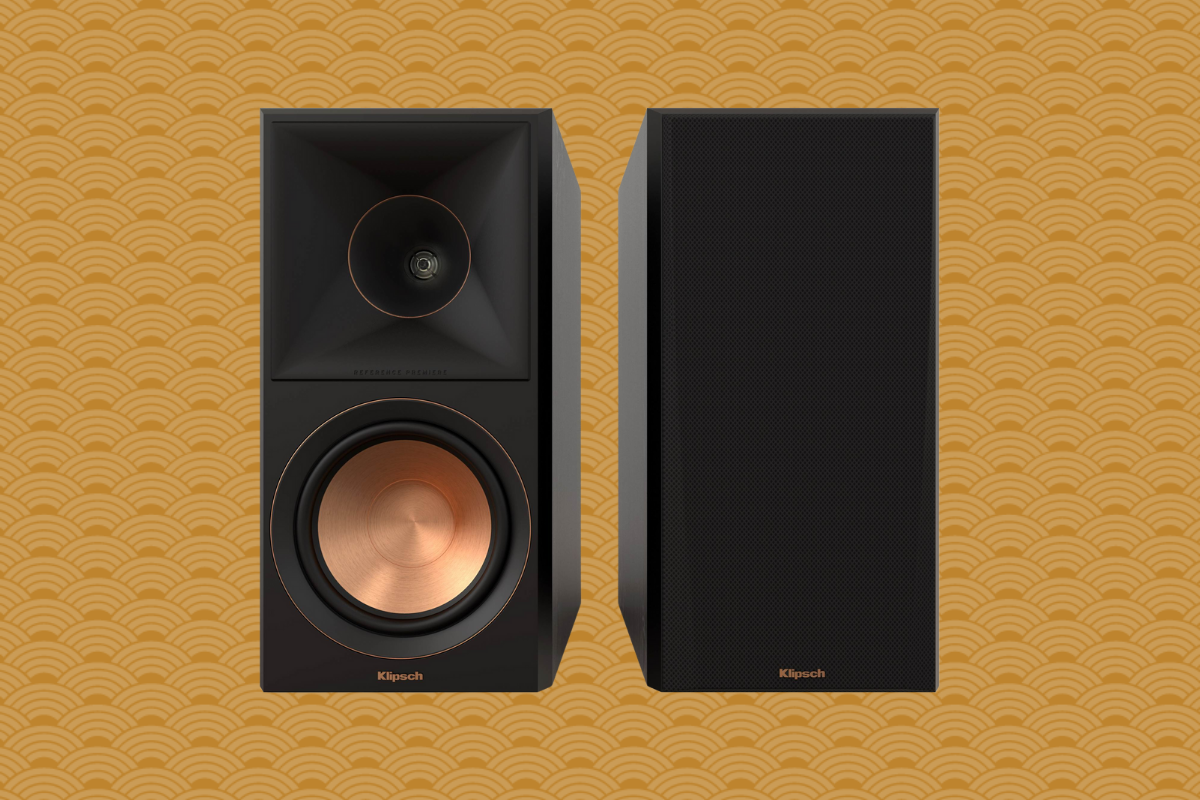TL;DR
The Klipsch Reference Premiere RP-600M II provides a lively, engaging, and authoritative sound like no other speaker you can buy for $750. That said, you must take care when matching electronics.
Intro
When the original Klipsch Reference Premiere RP-600M came out, most reviewers agreed it wasn’t the most transparent or articulate speaker. However, many of those same reviewers (including myself) still declared that it had a lively and refined sound that served as an engaging upgrade to the sub-$500 speakers on the market, especially if you listened to a lot of rock or EDM music.
Many consumers must’ve agreed with this because they sold like hotcakes. I recommended it to a bunch of folks who found my personal favorite, the Triangle BOREA BR-03, a little too restrained.
Today I’ve been blessed to get my hands on the sequel, the $749 Reference Premiere RP-600M II. Klipsch promises the all-new design will provide more detail and less distortion than the original, thus setting a new standard at the price point. I’m also sure they want to retain some of the RP-600’s “live” sound.
So, I’m sure you want to know if the RP-600M II is better than the original, and if so, is it worth the extra cash? Is it still one of the best speakers between $500-$1000? Well, read on, and I’ll give you the scoop!
Disclaimer: The RP-600M II was sent to us by Klipsch in exchange for an honest, unbiased review.
Specs
- 1″ horn-loaded LTS (Linear Travel Suspension) titanium diaphragm tweeter
- 6-1/2″ Cerametallic™ cone woofer
- frequency response: 44-25,000 Hz (± 3dB)
- power handling: up to 100 watts RMS/400 watts peak
- sensitivity: 94 dB
- impedance: 8 ohms
- bass-reflex design with rear-firing Tractrix port
Build
As far as build goes, the RP-600M II retains the same size and shape as the original, even though they’re slightly heavier. They feel a little more solid than the first version, and a quick rap on the side reveals the enclosures to be a little more inert than the originals from my judgment.
Klipsch says the 600M II’s enclosure has been upgraded with heavy furniture-grade materials, and it also seems there has been some enhancement to the internal bracing.
They come in two scratch-resistant vinyl finishes, Ebony and Walnut, and I liked the quality of the Ebony samples I received. They did in fact look like they would resist scratches well.

I did notice the absence of the piano black finish which they offered for the original 600M, which is too bad since I thought that finish added an additional touch of class to the speaker. Hopefully, they provide a “special edition” option down the road.
Overall, the construction is quite clean, with almost no visible fasteners. The grilles are magnetically attached, so there are no unsightly holes on the front baffles. Basically, they look like the original 600M, so if you liked that design, you should be happy with the sequel’s aesthetic.
One of the marquee features of the 600M II is a larger “Tractrix” horn which covers just about the whole top half of the speaker. Like the original, it’s still made of silicone to smooth the tweeter’s frequency response, but this time the larger area is said to improve efficiency, directivity, and soundstage.

As far as the tweeter goes, it’s still pretty much the same LTS (Linear Travel Suspension) design as the first 600M, again using a Titanium diaphragm and vented housing for enhanced detail and clarity on the top end.
Another marquee feature of the 600M II are the redesigned 6.5“ Cerametallic Woofers which have a slightly steeper angle to the cones as well as a new motor structure behind them. This is supposed to provide greater control and accuracy. I felt this was a weak spot in the original model, so I was happy to see the intention to address it.
Around the back, you have a Tractrix port which is identical to the original model, even though it seems to be a bit smaller. The large rectangular port is designed to manage airflow more efficiently, thus reducing port “chuff” or noise.

Also like the 600M, the new model has dual input terminals for Bi-wiring or Bi-amping, but the 600M II uses exposed wire jumpers instead of metal straps like the first model. I actually like the original design better, as it looked cleaner, but the new 5-way binding posts are easier to access, so that’s a plus.
On the bottom, the 600M II eschews the standard rubber bumpers for large cork pads, and they work well to prevent slipping. The cork did a great job securing the speakers on my metal stands, but I did use my customary anti-slip mats on top of the stands as well.
As far as specs go, they paint a picture of a very efficient speaker made to play pretty loud. The sensitivity rating is relatively high 94.5dB @ 2.83V/1m, and the power handling is 100w continuous/400w peak. Nominal impedance is an amp-friendly 8 ohms, and the frequency response is rated at 44 to 25 kHz.
Sound
For my sound tests, I started by listening to a bunch of tracks from TIDAL streamed from my Roon Core (HP Envy X360). The HP was connected to the USB input on the Audiolab Omnia, to which I hooked up the RP-600M II with Audioquest Rocket speaker cables.
Like the original 600M, the new MKII needs some room to breathe, especially with such a large port in the rear. To that end, I placed the speakers on my 24” metal stands about three feet away from the front and side walls.
As always, I started with the speakers pointed straight ahead, and unlike the first 600M which needed a bit of adjustment in terms of toe-in, the 600M II immediately snapped into focus and projected an awesome soundstage.

A slight toe-in enhanced the center image, albeit at the expense of soundstage width. I preferred them pointed straight ahead. It was obvious to me that the larger horns were providing enhanced directivity as compared to the older model, and that made placement pretty straightforward.
Listening to Macy Gray’s “Stripped”, (an amazingly well-recorded album BTW) I was immediately dazzled by the 600M II’s bass dynamics, along with the soundstage and image focus mentioned earlier. All of those aspects proved better than the original, which is impressive since the 600M was no slouch in those areas.
In the song “Annabelle” I loved how the guitar and horn solos were precisely placed on both sides of the soundstage. Macy’s vocal was nicely focused in the center and sounded very natural. The 600M II made the performance come alive, with nice depth and height, providing a holographic performance I’ve only heard from speakers costing twice as much, like the Polk Legend L200 and the Buchardt S400.

I fell in love with the “airiness” of the sound, which made every part of the mix palpable like you were in the room where the recording was made.
The RP-600M II just seemed to take everything that I loved about the first 600M speaker to the next level, with more credible imaging and a bigger soundstage. Not only that, the 600M II resolved a lot better than the first 600, providing added realism to instrumental timbre.
That said, I did find the 600M II to be a bit bright at times, something I didn’t hear from the originals. I’ve heard others mention it, but to me, it wasn’t an issue in the 600s. On the other hand, when I listened to the 600M II on the Audiolab amp the highs were a little too elevated for my taste.

That made me want to try something a little bit warmer, so I hooked the speakers up to my 9 watts per channel Cayin MT-12N Tube Amp (which had no issue driving these efficient speakers), and it not only calmed some of the brightness, but it also showcased the 600M II’s remarkable bass punch and articulation. I enjoyed that combination immensely.
One of my favorite aspects of the new Klipsch was how it had so much more control down low than the original. This gave the new 600M an authority and weight the original speaker couldn’t match.
The Wrap Up
In summary, the Klipsch Reference Premiere RP-600M II improves upon the original in several key areas including greater transparency, enhanced detail, and deeper, more articulate, bass. On the other hand, I did find the top end to be a bit brighter than the first 600M, necessitating even more care in terms of matching electronics.
That said, fit and finish are excellent, and they bring music alive like no other speaker I’ve heard at the price point. Their enthusiasm and clarity play well will any genre. Also, If you loved the first 600M, you definitely owe it to yourself to hear the sequel. They take a winning formula to the next level.
Hifitrends is reader-supported. We may earn an affiliate commission when you purchase through links on our site. Prices are subject to change at any time.

I’m an audio writer who started as a young audio salesman/consumer electronics professional back in the late 90s. That’s where I discovered the magic of 2-Channel sound. My hunger for great sound has led me on a delightful music quest that continues today.



Leave a Reply